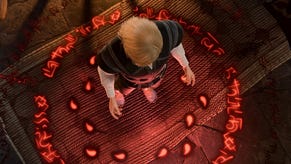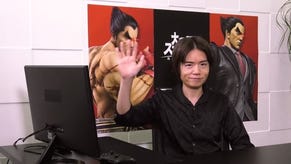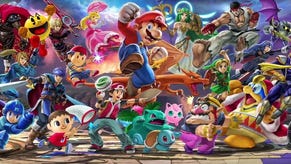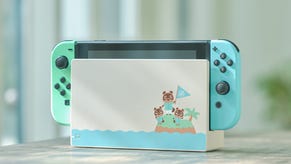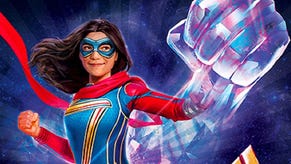Super Smash Bros. Ultimate review - a messy, magical festival of video games
Nintendo power.
Where, exactly, to start with a game like Super Smash Bros. Ultimate? Maybe it's in one of the 74-strong roster of fighters, such as newcomer Isabelle, who has the same propensity for getting shit done here as she does in her native Animal Crossing series. She's savage, a flurry of toy hammers and candy umbrellas plus a fishing rod used to reel in her opponents, and for her final trick she calls in the muscle, summoning Nook and co who immediately construct their town hall over your poor foe.
Maybe it's in the Spirits mode, the new single-player diversion that makes as much sense of the vast sprawl that's built around this series since its inception, an RPG-like sprawl through an overworld where you're tasked with collecting the souls of video game stars from far and wide. And so, if that roster of playable fighters that dips into Street Fighter by way of Final Fantasy, Castlevania and, of course, Nintendo's own back catalogue isn't enough for you then here's a chance to see minor cameos from Mach Rider, from Virtua Fighter, from Advance Wars, from Street Pass Mii Plaza, from Project Zero, from... Glory of Heracles?
Forgive me for getting a little breathless, but this is that sort of game; an enthusiastic grab bag of gaming history, where familiar call-backs are met by deeper cuts and references to obscure NES RPG series by the beloved, departed Data East. And that enthusiasm is infectious, too - Smash Bros. is, and always has been, a smile of a game, an endless festival featuring all your favourites plus a few more besides. Yes, it gets a bit messy sometimes, but the best festivals always do.
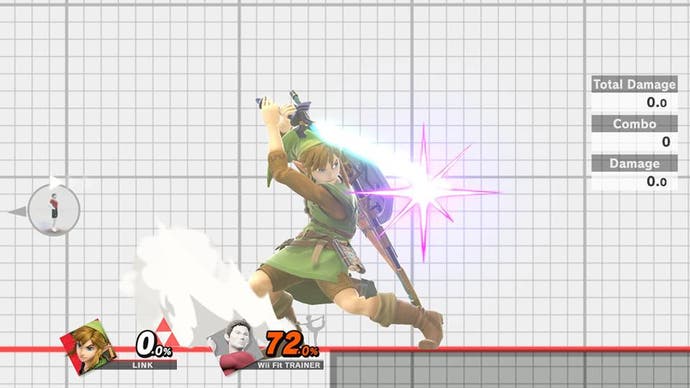
At its heart, Super Smash Bros. Ultimate offers the same slightly scruffy scrapping as the 1999 N64 original (or, more specifically, 2001's Melee, the game this series will forever be cast in the shadow of, and tethered to the same GameCube controller that still remains a viable - and superior - way to play, even on the Switch all these years later). It's a floaty fighter where you're ostensibly pummelling away at your opponents to make them more prone to being smashed off the stage, picking up random items to help you in your cause along the way.
Except, of course, it isn't. It's also a fighter where you can play a more traditional game, whittling away another character's health on stages that have less furniture and are stripped of those exuberant items. Maybe it's free-for-all where eight players pile in on stages that morph from one to another, where the gravity is toned down and you're all floating around like astronauts who've gorged on helium. Or maybe it's all of those things - the customisation runs deep in Super Smash Bros. Ultimate, with rulesets there to be tinkered with and returned to at will. This particular Smash is, really, any Smash you want it to be.
Look beyond all that, though, and it is a familiar Smash, albeit a refurbished one. There's a new weightiness to the fighters that's met by an upturn in their responsiveness, a slightly new arc to their flight as they're smashed around the screen, a new take on powershielding that brings it ever closer to Street Fighter's parries, dash cancelling that shifts the pace up even more and lord knows how many other minor changes that will surface over the next few months. Such details take a small while to surface - the first few hours here are likely to be spent overwhelmed at the exquisite toys the new fighters offer, and how they somehow - seamlessly - slot into place. It's an astounding balancing act that's put paid to some of the sniffiness that can surround Smash (a sniffiness I've been guilty of in the past, I must admit).

To complain that Smash doesn't have the depth of a Street Fighter always seemed to be missing the point, anyway - kind of like complaining that Mario Kart's tire deformation model can't really measure up to Gran Turismo's - but that notion is dismissed entirely once you've spent any decent amount of time with it. The fundamentals are stripped down - specials are executed via single directional inputs, meaning there's next to zero chance of whiffing - but that low barrier to entry doesn't mean there isn't depth. Or, perhaps more accurately, it's breadth where Smash Bros. comes alive - where an Inkling can turn up with a slosher and a reserve of ink to face up against Castlevania's Simon, with his ranged whip play, and for it all to somehow work.
And so it's not just the improbability of the match-ups that makes Smash Bros so appealing, but more their integrity. That integrity is key to healthy competitive scene, of course, and so much of Ultimate seems to have been built with that in mind. There's the competition between four friends on a sofa - what will always remain the heart of the Smash experience - that's served by smart, unobtrusive menus and easy access to Ultimate's bewildering suite of options, where rulesets can be saved and selected with zero pain. New modes such as Smash Strike - where you select a team of either three or five fighters apiece and whittle your way through them in a one-on-one encounter - and Smashdown - where characters are slowly blocked off the selection board as you progress - are perfect extensions for local multiplayer, which is now inarguably better served than it's ever been before. It's an absolute joy.
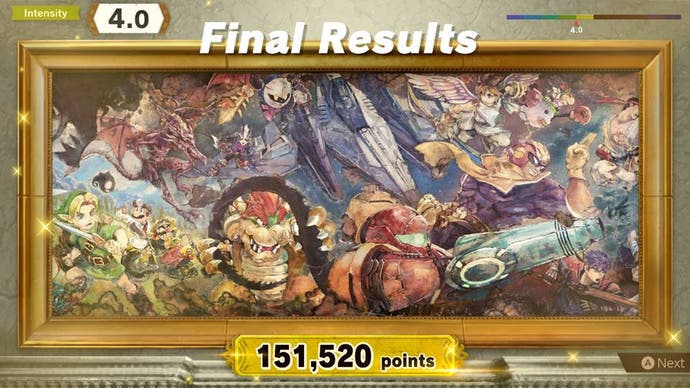
Then there's online, traditionally one of the series' weak spots, which seems - from a morning's play - improved from the Wii U iteration, though does remain dependent on a decent connection. I've played through a handful of full-on four player matches with no problems, but then stepped away from the router and suffered an unplayable sludge of an encounter. How much of that can be blamed on Nintendo's infrastructure and the Switch's deficiencies - or those of my own set-up - is hard to say, but nevertheless if you're serious about taking Smash Bros. Ultimate online the LAN adapter seems like a wise investment.
It's brought alive by a lobby system in the custom arenas that's a delight - a small boxing ring where the fight takes place, where you can place your counter to queue up for a scrap or maybe place it in the stands to simply spectate. Good lord, the menus in this thing - snappy, bright and as vibrant as anything else in the game, and where pressing the B button to back out of a menu, met with the slow build of an icon and the pitter-patter of scattering feet, is an action that's more engaging, more joyful and more fun than a fair number of titles I've played this year.

It's those details that bring Smash Bros. to life, really, that attention to the smaller things from series creator Masahiro Sakurai - that selfless soul who once confided to mentor Satoru Iwata that games should always be made with the player in mind, and was baffled that more games weren't made that way - that make it all such a thrill. There's a mindfulness for all types of players in Smash Bros. Ultimate, from the professional to the novice, and a willingness to serve them all that's endearing.
Oh, and for the solo player, this is perhaps the best Smash offering yet. A revamped Classic Mode is the real deal, I think, with tailored campaigns for each of the playable characters, though World of Light will doubtless get the most attention. The lead attraction for the solo player, it's a 12 hour RPG-esque crawl over an open world complete with dungeons, bosses and one-off encounters where you collect Spirits. The Spirits themselves are strange appendages, little stickers that can be levelled up and taken into battle to grant you perks, tying into an elemental rock/paper/scissors system that gives the mode some semblance of depth, though really it's just an excuse to hoover up one of the 1,297 spirits that draw from far and deep into video gaming history.
Does it work? I'm not entirely sure, though I'm hardly going to complain when so much else of this gloriously generous, spirited and impeccably presented package lands so well. And where else is Isabelle, with the assistance of Yakuman, the cover star of Nintendo's 1989 Mahjong game, going to square up against Solid Snake against the backdrop of Electroplankton's Hanenbow? And how, exactly, has Super Smash Bros. Ultimate managed to make sense of that all? Almost impossibly, it has. Mad, messy, and frequently magical, Smash Bros. is video games. And, you know what? They're kind of alright.




